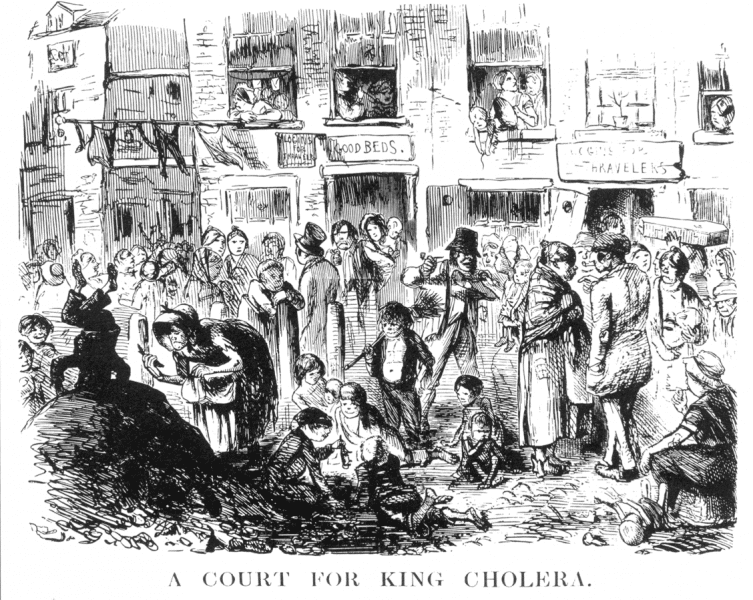In 1817, the first cholera pandemic broke out Kolkata (also known as Calcutta). Between 1817 and 1824, it spread through Southeast Asisa to the Middle East, eastern Africa, and the Mediterranean. British soldiers were included in the death toll, which reached hundreds of thousands of people. The second cholera pandemic (1826-1837) spread from Russia, to the rest of Europe , Great Britain, and the Americas, as well as China and Japan. While cholera had been around significantly longer, the first pandemic signaled a disease of global importance and kicked off numerous rounds of cholera pandemics that would impact most of the globe.
The British newspapers had some letters to the editor, short articles, and advertisements promising quack medications and remediations for cholera. Meanwhile, the news from India reported starkly on the realities of the disease as it ravaged the country.
During the first two cholera pandemics, it was largely believed that foul air and filth were the vehicles for spreading the disease. There was debate in trying to isolate European compared with Asiatic cholera:
The Lancet: A Journal of British and Foreign Medicine, Surgery, Obstetrics, Physiology, Pathology, Pharmacology, Public Health and News. (1834). United Kingdom: Lancet, Limited.
During the third wave of cholera, including an outbreak in England and Wales in 1848, the link between cholera and the water supply was beginning to be noted. It was during the two year outbreak that London Dr. John Snow began to test a theory of cholera being spread by polluted water. Through investigation, he narrowed down the Soho contamination to a hot spot and learned most got their water from the Broad Street pump. He was able to develop a map of the outbreak in relation to the pump, and therefore convince the local council to remove the pump handle which subsequently eliminated the outbreak. (https://librarycompany.org/2020/05/21/pandemic-reading-cholera-john-snows-map-and-poes-red-death/).
Here is an excerpt from a publication by the good Dr:

The seventh wave or pandemic of cholera began in 1961 until present day, with WHO identifying cholera as endemic in many countries. This wave began in Indonesia, and spread to Bangladesh, India, and the Soviet Union until reaching from South America to Italy in the 1960s and 70s. We are now well aware of its waterborne transmission and poor sanitation systems. As European and many American places worked to improve water and sanitation, the spread of cholera would be limited by the late 19th century.











